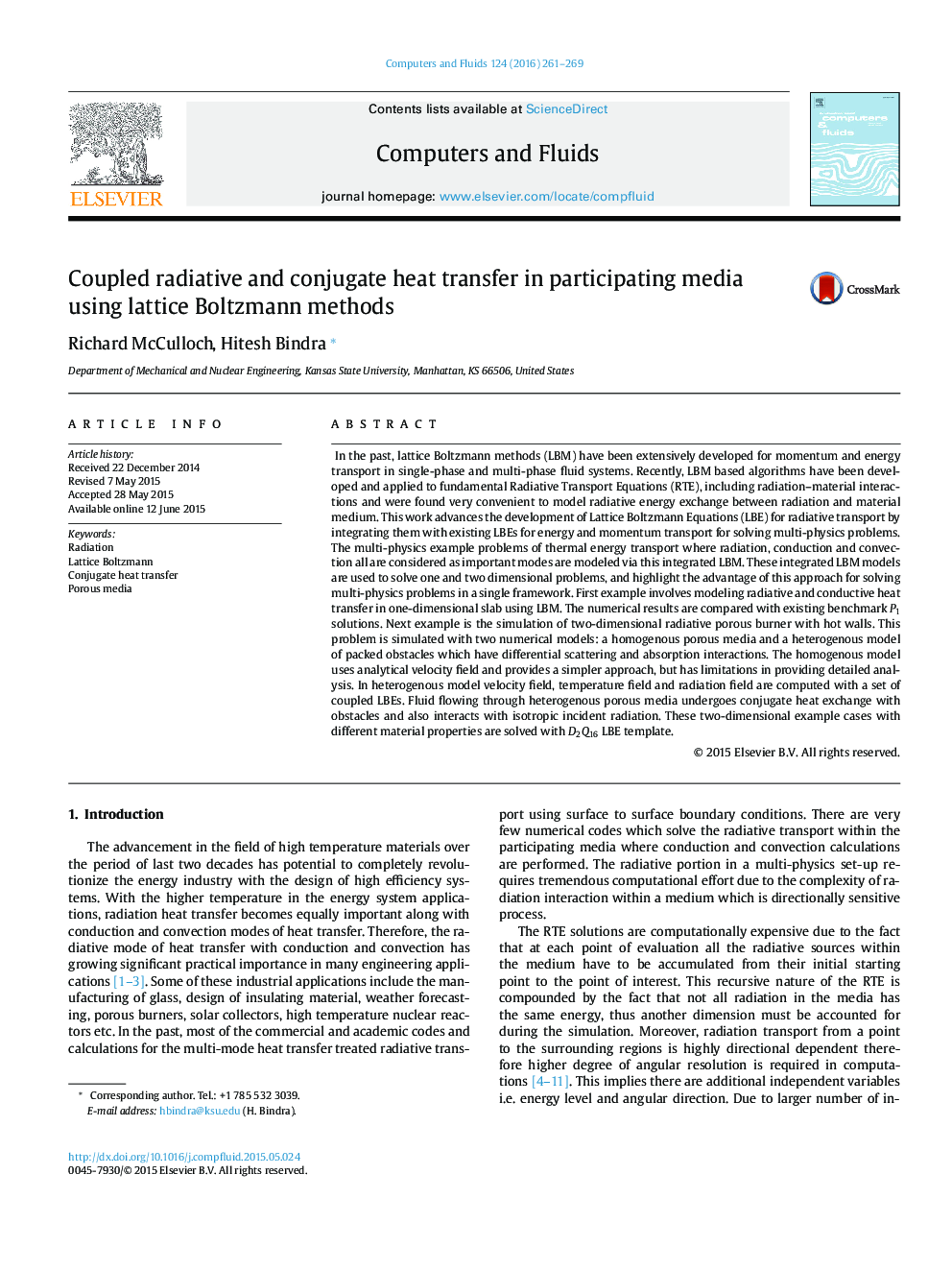| کد مقاله | کد نشریه | سال انتشار | مقاله انگلیسی | نسخه تمام متن |
|---|---|---|---|---|
| 768105 | 1462686 | 2016 | 9 صفحه PDF | دانلود رایگان |
• Multimode heat transfer with radiative transport in participating media is modeled via LBM.
• Conduction–radiation coupled thermal LBM results compare well with spherical harmonics benchmark solutions.
• Radiation–convection–conduction model is developed for homogenous and heterogeneous radiative porous burner.
In the past, lattice Boltzmann methods (LBM) have been extensively developed for momentum and energy transport in single-phase and multi-phase fluid systems. Recently, LBM based algorithms have been developed and applied to fundamental Radiative Transport Equations (RTE), including radiation–material interactions and were found very convenient to model radiative energy exchange between radiation and material medium. This work advances the development of Lattice Boltzmann Equations (LBE) for radiative transport by integrating them with existing LBEs for energy and momentum transport for solving multi-physics problems. The multi-physics example problems of thermal energy transport where radiation, conduction and convection all are considered as important modes are modeled via this integrated LBM. These integrated LBM models are used to solve one and two dimensional problems, and highlight the advantage of this approach for solving multi-physics problems in a single framework. First example involves modeling radiative and conductive heat transfer in one-dimensional slab using LBM. The numerical results are compared with existing benchmark P1 solutions. Next example is the simulation of two-dimensional radiative porous burner with hot walls. This problem is simulated with two numerical models: a homogenous porous media and a heterogenous model of packed obstacles which have differential scattering and absorption interactions. The homogenous model uses analytical velocity field and provides a simpler approach, but has limitations in providing detailed analysis. In heterogenous model velocity field, temperature field and radiation field are computed with a set of coupled LBEs. Fluid flowing through heterogenous porous media undergoes conjugate heat exchange with obstacles and also interacts with isotropic incident radiation. These two-dimensional example cases with different material properties are solved with D2Q16 LBE template.
Journal: Computers & Fluids - Volume 124, 2 January 2016, Pages 261–269
